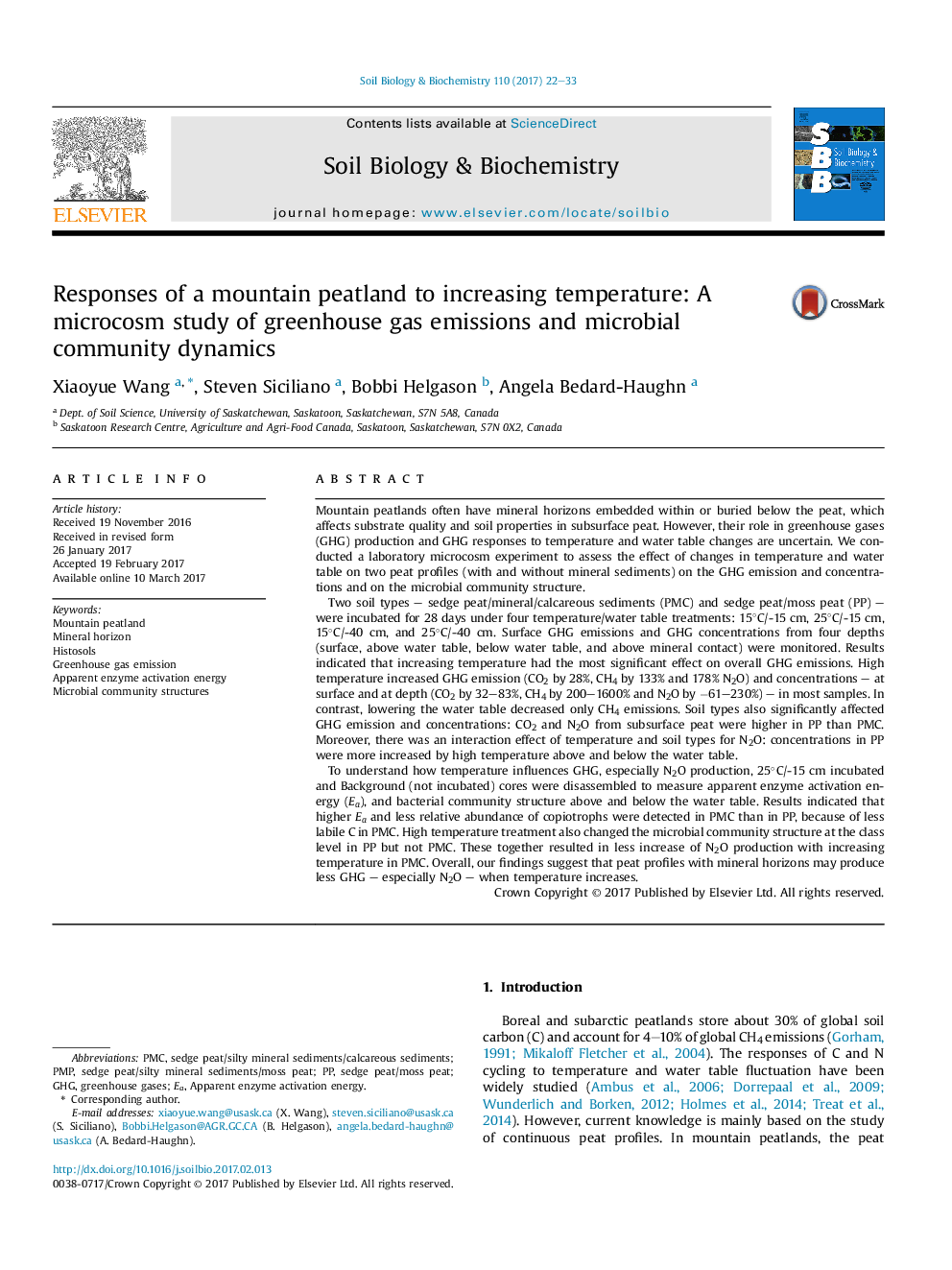| کد مقاله | کد نشریه | سال انتشار | مقاله انگلیسی | نسخه تمام متن |
|---|---|---|---|---|
| 5516396 | 1542574 | 2017 | 12 صفحه PDF | دانلود رایگان |
- High temperature increased GHG emission and concentrations in most samples.
- Soil type only affected CO2 and N2O concentration from subsurface.
- Interaction effect of temperature and soil type was detected for N2O concentration.
- N2O was more increased by high temperature in peat without mineral sediments.
- Interaction effect was likely due to different level of labile C & Ea in two soils.
Mountain peatlands often have mineral horizons embedded within or buried below the peat, which affects substrate quality and soil properties in subsurface peat. However, their role in greenhouse gases (GHG) production and GHG responses to temperature and water table changes are uncertain. We conducted a laboratory microcosm experiment to assess the effect of changes in temperature and water table on two peat profiles (with and without mineral sediments) on the GHG emission and concentrations and on the microbial community structure.Two soil types - sedge peat/mineral/calcareous sediments (PMC) and sedge peat/moss peat (PP) - were incubated for 28 days under four temperature/water table treatments: 15°C/-15 cm, 25°C/-15 cm, 15°C/-40 cm, and 25°C/-40 cm. Surface GHG emissions and GHG concentrations from four depths (surface, above water table, below water table, and above mineral contact) were monitored. Results indicated that increasing temperature had the most significant effect on overall GHG emissions. High temperature increased GHG emission (CO2 by 28%, CH4 by 133% and 178% N2O) and concentrations - at surface and at depth (CO2 by 32-83%, CH4 by 200-1600% and N2O by â61-230%) - in most samples. In contrast, lowering the water table decreased only CH4 emissions. Soil types also significantly affected GHG emission and concentrations: CO2 and N2O from subsurface peat were higher in PP than PMC. Moreover, there was an interaction effect of temperature and soil types for N2O: concentrations in PP were more increased by high temperature above and below the water table.To understand how temperature influences GHG, especially N2O production, 25°C/-15 cm incubated and Background (not incubated) cores were disassembled to measure apparent enzyme activation energy (Ea), and bacterial community structure above and below the water table. Results indicated that higher Ea and less relative abundance of copiotrophs were detected in PMC than in PP, because of less labile C in PMC. High temperature treatment also changed the microbial community structure at the class level in PP but not PMC. These together resulted in less increase of N2O production with increasing temperature in PMC. Overall, our findings suggest that peat profiles with mineral horizons may produce less GHG - especially N2O - when temperature increases.
Journal: Soil Biology and Biochemistry - Volume 110, July 2017, Pages 22-33
